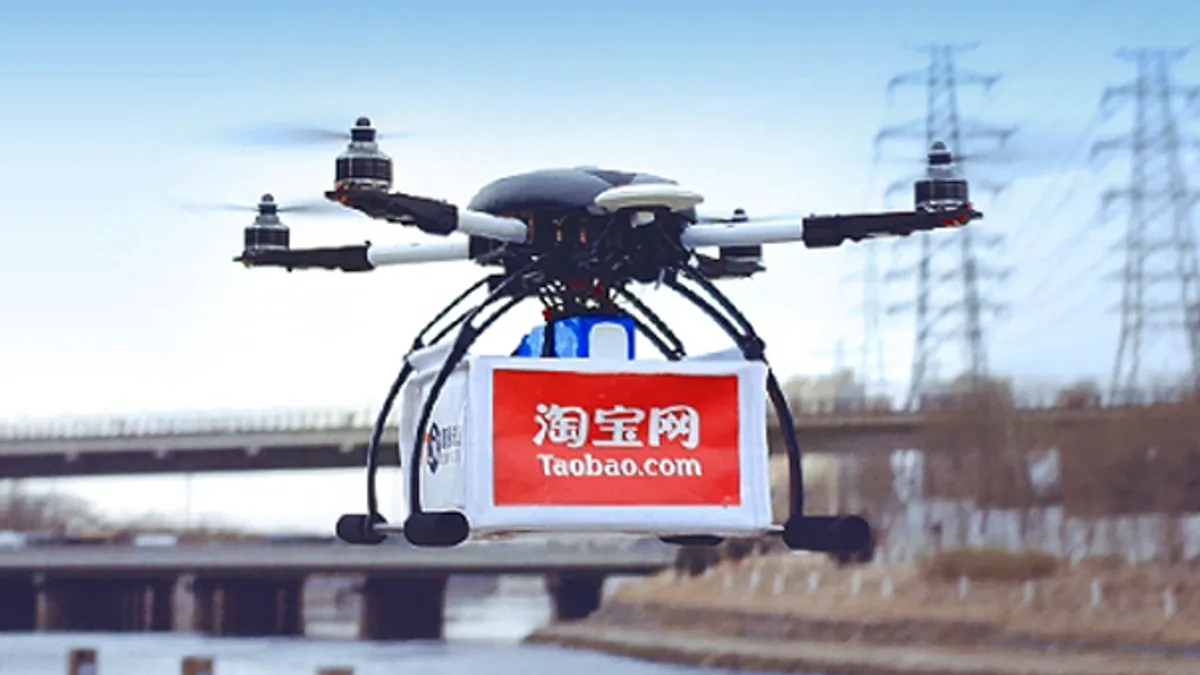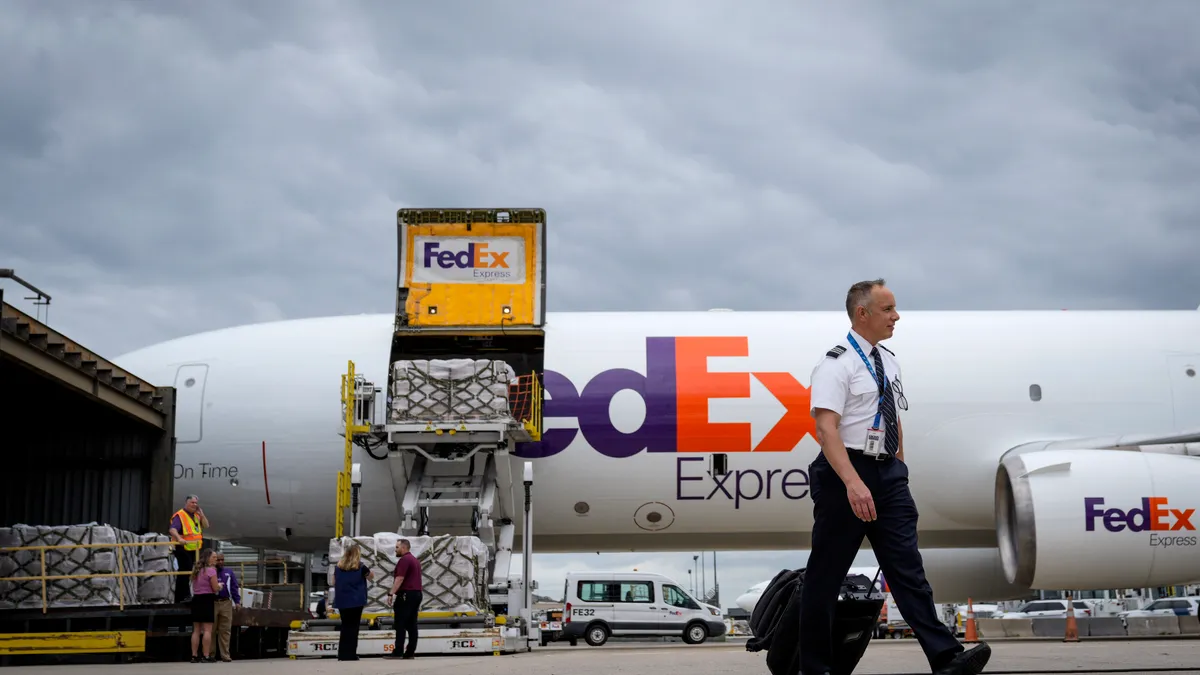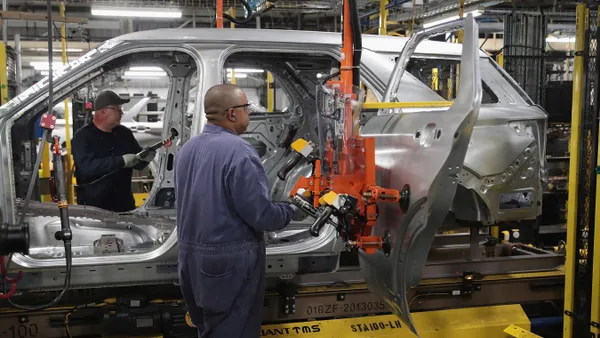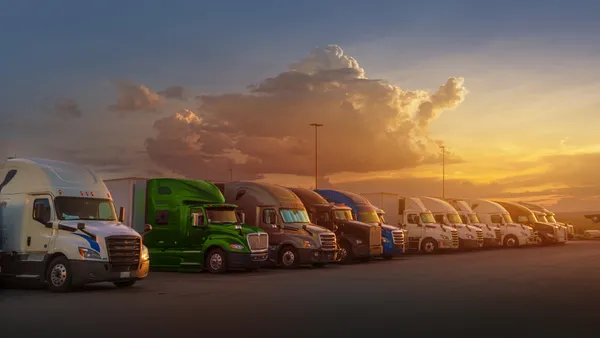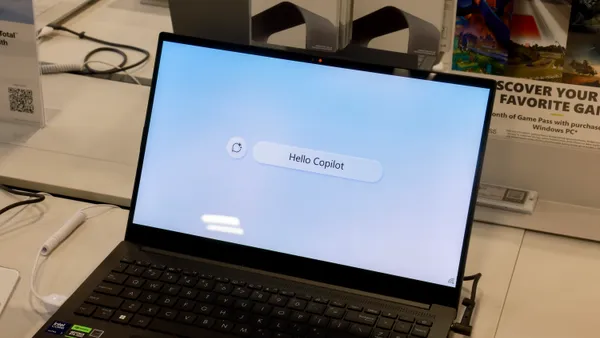Dive Brief:
- Wal-Mart and Target may be lagging behind Amazon on e-commerce sales, but they are best positioned to beat the giant on one promising last-mile innovation: drones, according to a Business Insider report.
- Customers demand fast and free shipping, often an expensive endeavor for retailers. Yet drone technology promises to lower these costs to under $1 per package by eliminating labor and fuel requirements, based on a 2015 report by ARK Investment Management.
- Data from The Weather Data analyzed by BI Intelligence reveals 47% of Target's customer base and 49% of Wal-Mart's customer base lives in a drone-accessible zone (six miles or less). Amazon claims 44% of its customers live within 20-miles of a fulfillment center, a distance too for current drone technology.
Dive Insight:
"There are many advantages to a customer-centric approach," Amazon CEO Jeff Bezos wrote in a letter to shareholders last week, "but here's the big one: customers are always beautifully, wonderfully dissatisfied, even when they report being happy and business is great."
Bezos' words show how a company can look at its business model and find ways to improve the customer experience, providing them with a service they may not have known they needed. For Amazon, that was 2-day free shipping or even digital freight forwarding, which allowed it to take advantage of an existing customer base (customers and shippers alike) and improve service.
Business Insider's analysis of The Weather Company's data shows retailers too can take advantage of their existing customer base and exceed customers' expectations through last-mile innovations such as drone technology. While many retailers may be shuttering stores nationwide, brick and mortar can remain a competitive advantage in terms of geography and customer loyalty.
The story then is not so much that retailers can leverage drones to beat Amazon, but that they can leverage a strong brick and mortar presence to better service the more than 40% of shoppers living within six miles of stores. Amazon may dominate e-commerce, but it does not have a footprint in the customer's community.
Wal-Mart recently added a page to the omnichannel playbook by offering discounts to online shoppers willing to pick up an item in store. Doing so cuts down shipping costs and increases the chance the shopper will buy another item in-store, or at least return at a later date.
Drone delivery may be years away, but the lessons today remain: brick and mortar can be a competitive advantage if well-integrated into a customer-centric supply chain strategy.



